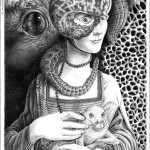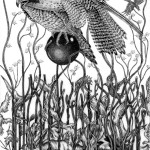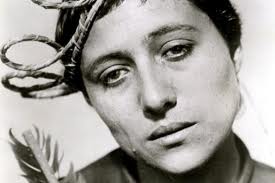[Article/Interview by George Teseleanu]
ARTIST MARC GOSSELIN
Full name:
Marc Joseph Gosselin
Date of birth:
May 6, 1967
What is your current location?
Toronto, Ontario, Canada
Tell us a little about the art styles that you use.
Due to the fact I’m a medical and scientific illustrator I deal with high realism. Since our illustrations are used for teaching purposes, the subjects we are illustrating have to be represented accurately and in detail. On my time off I like to explore surrealism. It allows me to relax and at the same time keeps my drawing arm warmed up and ready to tackle whatever contract comes my way.
What are your tools of trade?
The Prismacolor pencils are my tools of choice. They are oilier than most color pencils and blend beautifully with the help of some mineral spirits. Best of all you don’t have to worry about the mess one usually deals with when using paints, pastels, and charcoal, just to name a few. When I want to draw something detailed in black and white I sometimes use carbon dust, which gives wonderful results. The computer and Photoshop of course, are also a wonderful and necessary tool.
Detail a little more about realism.
It is necessary when you are a medical and scientific illustrator to be proficient in realism. For example when we are illustrating a surgical procedure all the nerves as well as arteries and veins have to be in their proper location in relation to the incision and organs being represented, otherwise the students viewing our illustrations may be misled, because ultimately our illustrations are used for teaching purposes, and the details have to be accurate.
What is your favorite style and why?
Surrealism is my favorite because I don’t have to be as serious with the outcome, as my pieces which deal with realism. I can relax and have fun, and at the same time keep my drawing arm well oiled.
What other art styles would you like to experiment with?
For the moment I am very content with realism and surrealism. I was never really found of the abstract, but who knows maybe someday.
How can you define in your own word, surrealism?
Surrealism is like an explosion of ideas on paper, and at the moment I am being mentored by one of the best surrealists in the field, Bernard Dumaine.
Who is your favorite artist and how do you connect with his/her works?
There are so many amazing artists out there that I admire. It would be very difficult for me to choose one in particular.
What influenced you to become an artist?
It seemed to be the natural course of events since I’ve been drawing for as long as I can remember.
How long have you been an artist?
I’ve been an artist for as long as I could hold a pencil. My parents had me while they were students at Cornel University, and there was not much money to go around, so the only toys I had as a young child were color pencils and a pad of paper. I started being a professional artist when I was 17, and still in high school. The father of my girlfriend at the time was a doctor of neuroanatomy who was writing a book on the subject, and invited me to illustrate his textbook. He also introduced me to a program called Biomedical communications, which was given at the University of Toronto’s department of surgery. I subsequently graduated with honors and I’ve been a medical and scientific illustrator ever since.
How did your family and friends react of you being an artist?
My parents were happy to see me follow my dream, and supported me all the way. They are very proud of my work, and are my best critics.
Where do you get your inspiration?
My environment, and other artists’ work inspire me. When I’m working on my medical illustrations it’s more accuracy than inspiration that is needed, yet when I deal with surrealism I get a chance to put my hair down and truly be inspired by whatever comes to mind.
What determined you to do collaborations?
As soon as I was introduced to the exquisite corpse and saw all the magnificent collaborations I knew I wanted to participate. At the moment I’m collaborating with several amazing artists.
What can you tell us about your first collaboration?
It was nerve wracking because I did not want to ruin the illustration started by the artist I was collaborating with. When I begin a collaborative corpse I can be relaxed, but completing one is a whole different story. I believe I will always feel that way because of the enormous responsibility that comes with completing somebody else’s work.
Can you tell us how collaborations influenced you and your art?
It has opened up a whole new way of expressing myself without any restrictions through my art.
How did the Internet influence your art?
Through deviantART I met wonderful illustrators including Bernard Dumaine who introduced me to the exquisite corpse, also known as exquisite cadaver (from the original French term “cadavre exquis”) or rotating corpse. It is a method by which a collection of images is collectively assembled. Each collaborator adds to a composition in sequence, by being allowed to see the edge of what the previous person contributed. The resulting image is spectacular and surreal.
Where can people see your art?
My work can be seen on deviantART.com.
How can people contact you?
Through deviantART.com.
———————————————————————————————————————-
You can contact George Teseleanu at blana_de_maimutza@yahoo.com.





